
The 1790s was a decade that began on January 1, 1790, and ended on December 31, 1799. Considered as some of the Industrial Revolution's earlier days, the 1790s called for the start of an anti-imperialist world, as new democracies such as the French First Republic and the United States began flourishing at this era. Revolutions – both political and social – forever transformed global politics and art, as wars such as the French Revolutionary Wars and the American Revolutionary War moulded modern-day concepts of liberalism, partisanship, elections, and the political compass.
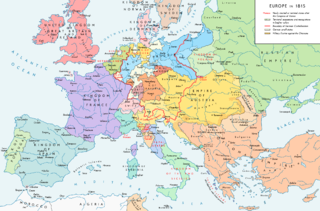
The Congress of Vienna of 1814–1815 was a series of international diplomatic meetings to discuss and agree upon a possible new layout of the European political and constitutional order after the downfall of the French Emperor Napoleon Bonaparte. Participants were representatives of all European powers and other stakeholders, chaired by Austrian statesman Klemens von Metternich, and held in Vienna from September 1814 to June 1815.
Treaty of Paris may refer to one of many treaties signed in Paris, France:

Klemens Wenzel Nepomuk Lothar, Prince of Metternich-Winneburg zu Beilstein, known as Klemens von Metternich or Prince Metternich, was a conservative Austrian statesman and diplomat who was at the center of the European balance of power known as the Concert of Europe for three decades as the Austrian Empire's foreign minister from 1809 and Chancellor from 1821 until the liberal Revolutions of 1848 forced his resignation.
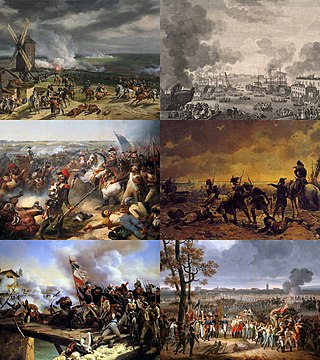
The War of the First Coalition was a set of wars that several European powers fought between 1792 and 1797 initially against the constitutional Kingdom of France and then the French Republic that succeeded it. They were only loosely allied and fought without much apparent coordination or agreement; each power had its eye on a different part of France it wanted to appropriate after a French defeat, which never occurred.
The Treaty of Paris, signed on 30 May 1814, ended the war between France and the Sixth Coalition, part of the Napoleonic Wars, following an armistice signed on 23 April between Charles, Count of Artois, and the allies. The treaty set the borders for France under the House of Bourbon and restored territories to other nations. It is sometimes called the First Peace of Paris, as another one followed in 1815.

The Treaty of Paris of 1815, also known as the Second Treaty of Paris, was signed on 20 November 1815, after the defeat and the second abdication of Napoleon Bonaparte. In February, Napoleon had escaped from his exile on Elba, entered Paris on 20 March and began the Hundred Days of his restored rule. After France's defeat at the hands of the Seventh Coalition at the Battle of Waterloo, Napoleon was persuaded to abdicate again, on 22 June. King Louis XVIII, who had fled the country when Napoleon arrived in Paris, took the throne for a second time on 8 July.

The Hundred Days, also known as the War of the Seventh Coalition, marked the period between Napoleon's return from eleven months of exile on the island of Elba to Paris on 20 March 1815 and the second restoration of King Louis XVIII on 8 July 1815. This period saw the War of the Seventh Coalition, and includes the Waterloo Campaign, the Neapolitan War as well as several other minor campaigns. The phrase les Cent Jours was first used by the prefect of Paris, Gaspard, comte de Chabrol, in his speech welcoming the king back to Paris on 8 July.

The Concert of Europe was a general consensus among the great powers of 19th-century Europe to maintain the European balance of power, political boundaries, and spheres of influence. Never a perfect unity and subject to disputes and jockeying for position and influence, the Concert was an extended period of relative peace and stability in Europe following the Wars of the French Revolution and Napoleonic Wars which had consumed the continent since the 1790s. There is considerable scholarly dispute over the exact nature and duration of the Concert. Some scholars argue that it fell apart nearly as soon as it began in the 1820s when the great powers disagreed over the handling of liberal revolts in Italy, while others argue that it lasted until the outbreak of World War I and others for points in between. For those arguing for a longer duration, there is generally agreement that the period after the Revolutions of 1848 and the Crimean War (1853-1856) represented a different phase with different dynamics than the earlier period.
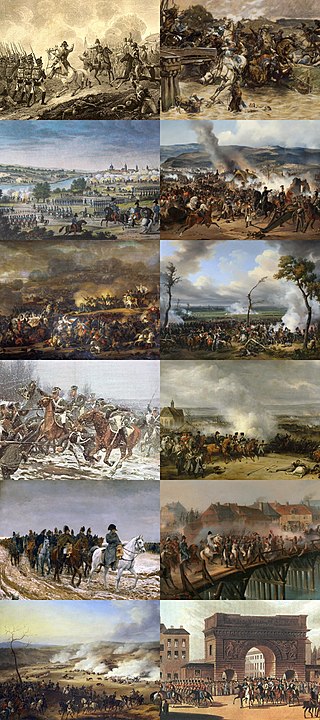
In the War of the Sixth Coalition, sometimes known in Germany as the Wars of Liberation, a coalition of Austria, Prussia, Russia, Spain, the United Kingdom, Portugal, Sweden, Sardinia, and a number of German States defeated France and drove Napoleon into exile on Elba. After the disastrous French invasion of Russia of 1812 in which they had been forced to support France, Prussia and Austria joined Russia, the United Kingdom, Sweden, and Portugal, and the rebels in Spain who were already at war with France.

The War of the Second Coalition was the second war on revolutionary France by most of the European monarchies, led by Britain, Austria, and Russia and including the Ottoman Empire, Portugal, Naples and various German monarchies. Prussia did not join the coalition, and Spain supported France.

The Congress of Aix-la-Chapelle, held in the autumn of 1818, was a high-level diplomatic meeting of France and the four allied powers Britain, Austria, Prussia, and Russia which had defeated it in 1814. The purpose was to decide the withdrawal of the army of occupation from France and renegotiate the reparations it owed. It produced an amicable settlement, whereby France refinanced its reparations debt, and the Allies in a few weeks withdrew all of their troops.

The Paris Declaration respecting Maritime Law of 16 April 1856 was an international multilateral treaty agreed to by the warring parties in the Crimean War gathered at the Congress at Paris after the peace treaty of Paris had been signed in March 1856. As an important juridical novelty in international law the treaty for the first time created the possibility for nations that were not involved in the establishment of the agreement and did not sign, to become a party by acceding the declaration afterwards. So did altogether 55 nations, which otherwise would have been possible in such a short period. This represented a large step in the globalisation of international law.
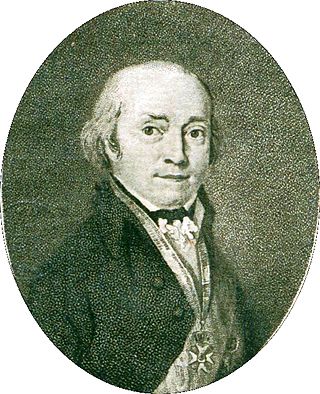
Christian August Heinrich Kurt Graf von Haugwitz was a German statesman, best known for serving as Foreign Minister of Prussia during the Napoleonic Wars.

The Congress of Paris is the name for a series of diplomatic meetings held in 1856 in Paris, France, to negotiate peace between the warring powers in the Crimean War that had started almost three years earlier.
Treaty of Vienna may refer to:
The Treaty of Chaumont was a series of separately-signed but identically-worded agreements in 1814 between the Austrian Empire, the Kingdom of Prussia, the Russian Empire and the United Kingdom. They were dated 1 March 1814, although the actual signings took place on 9 or 19 March. The treaty was intended to draw the powers of the Sixth Coalition into a closer alliance in case France rejected the peace terms they had recently offered. Each power agreed to put 150,000 soldiers in the field against France and to guarantee for twenty years the European peace against French aggression.

The Treaty of Fontainebleau was an agreement established in Fontainebleau, France, on 11 April 1814 between Napoleon and representatives of Austria, Russia and Prussia. The treaty was signed in Paris on 11 April by the plenipotentiaries of both sides and ratified by Napoleon on 13 April. With this treaty, the allies ended Napoleon's rule as emperor of the French and sent him into exile on Elba.
The Treaty of Paris of 24 February 1812 between Napoleon I of France and Frederick William III of Prussia established a Franco-Prussian alliance directed against Russia. On 24 June, Prussia joined the French invasion of Russia. The unpopular alliance broke down when the Prussian contingent in French service signed a separate armistice, the Convention of Tauroggen, with Russia on 30 December 1812. On 17 March 1813, Frederick William declared war on France and issued his famous proclamation "To My People".
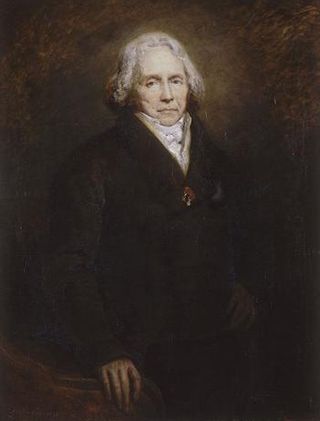
The Secret Treaty of Vienna was a defensive alliance signed on 3 January 1815 by France, the Austrian Empire and Great Britain. It took place during the Congress of Vienna, negotiations on the future of Europe following Napoleon's defeat in the War of the Sixth Coalition.

 Arthur Wellesley, 1st Duke of Wellington
Arthur Wellesley, 1st Duke of Wellington  Joaquim Lobo Silveira, 7th Count of Oriola
Joaquim Lobo Silveira, 7th Count of Oriola  António de Saldanha da Gama, Count of Porto Santo
António de Saldanha da Gama, Count of Porto Santo  Count Carl Löwenhielm
Count Carl Löwenhielm  Jean-Louis-Paul-François, 5th Duke of Noailles
Jean-Louis-Paul-François, 5th Duke of Noailles  Klemens Wenzel, Prince von Metternich
Klemens Wenzel, Prince von Metternich  André Dupin
André Dupin  Count Karl Robert Nesselrode
Count Karl Robert Nesselrode  Pedro de Sousa Holstein, 1st Count of Palmela
Pedro de Sousa Holstein, 1st Count of Palmela  Robert Stewart, Viscount Castlereagh
Robert Stewart, Viscount Castlereagh  Emmerich Joseph, Duke of Dalberg
Emmerich Joseph, Duke of Dalberg  Baron Johann von Wessenberg
Baron Johann von Wessenberg  Prince Andrey Kirillovich Razumovsky
Prince Andrey Kirillovich Razumovsky  Charles Stewart, 1st Baron Stewart
Charles Stewart, 1st Baron Stewart  Pedro Gómez Labrador, Marquis of Labrador
Pedro Gómez Labrador, Marquis of Labrador  Richard Le Poer Trench, 2nd Earl of Clancarty
Richard Le Poer Trench, 2nd Earl of Clancarty  Friedrich von Gentz (Congress Secretary)
Friedrich von Gentz (Congress Secretary) Baron Wilhelm von Humboldt
Baron Wilhelm von Humboldt  William Cathcart, 1st Earl Cathcart
William Cathcart, 1st Earl Cathcart  Prince Karl August von Hardenberg
Prince Karl August von Hardenberg  Charles Maurice de Talleyrand-Périgord
Charles Maurice de Talleyrand-Périgord  Count Gustav Ernst von Stackelberg
Count Gustav Ernst von Stackelberg 











